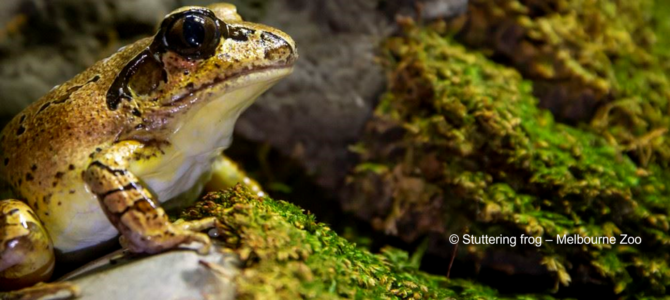by Simon Tang (2022 Honours Student)
An intense, murky river. Densely packed trees, twisting into each other and Mother Earth below. Decaying detritus scattered throughout the landscape. This pulsating ecosystem is not the most welcoming of places. Many dare not to stay for too long, to avoid angering an infected mosquito, or brushing too close to a leech. In such a disease-riddled habitat, where bacteria and fungi fester and multiply, what thrives?
In the distance, the unperturbed croak of a frog, lazily perched atop a stone, reminds us of who prevails in these lands.
The frog is an enigmatic creature. While seemingly unassuming in appearance, they secretly walk a fine line between survival and destruction. This balancing act exists only as a result of their skin, a paradoxical blessing and curse. Frogs bear primitive, inefficient lungs, and so rely on their skin as a secondary respiratory organ to absorb enough oxygen. To sufficiently compensate for their lungs, their skin must be moist at all times, as water allows for more air to permeate into the skin. As a result, they are perpetually married to rivers and ponds, spending nearly their entire lives around them. While these water bodies are intrinsically life-giving, the enemy is never too far. Armies of hostile diseases lie beneath the water surface, primed to usurp the delicate skin that awaits them.
Fortunately, this is no new foe for the frog. Over millions of years of evolution, frogs have accrued an impressive catalogue of chemical weapons tailored to neutralise these microbes. When the microscopic enemies begin their attack, the frog secretes a powerful, antimicrobial serum from their skin. Like waves of infantry soldiers, these secretions are efficient, and leave little in their way. After a tough battle, the enemy side has been defeated. The frog can rest easy, and breathe for another day.
***
In some ways, the chemical warfare between the frog and diseases reflects our own battle with pathogens. Over hundreds of years of research, we have developed our own chemical fleet of medicines and therapeutics to treat a range of diseases. When we are being overwhelmed by infections and illness, a simple pill can turn the tide.
However, the tide is turning back. Over the past few years, we have become intimately aware of how bacteria and viruses can impact our lives, and the devastating effects they can have on society. Diseases that were once thought to be controlled are now coming back, stronger than ever. Many animal diseases are also crossing the species barrier to infect humans, exposing us to diseases we have never experienced before. We are currently facing a pathogenic assault on all fronts, and our weapons are dwindling.
To help better treat diseases, my honours project is taking a closer look at the frogs around us. Through identifying the specific, bioactive peptides in the skin secretions of frogs, I am discovering unique molecules with disease-killing properties that have never been exploited before. These compounds have the potential to help inform better drug design, or even to be directly translated into novel treatments for human diseases.
In a world where infectious diseases threaten to take over, our unlikely superhero might be hidden in a riverbank, sunbathing on a stone.
Author:

Simon Tang (2022 Honours Student) is creating a reference genome for the stuttering frog (Mixophyes balbus) for the purpose of characterising novel antimicrobial peptides.
